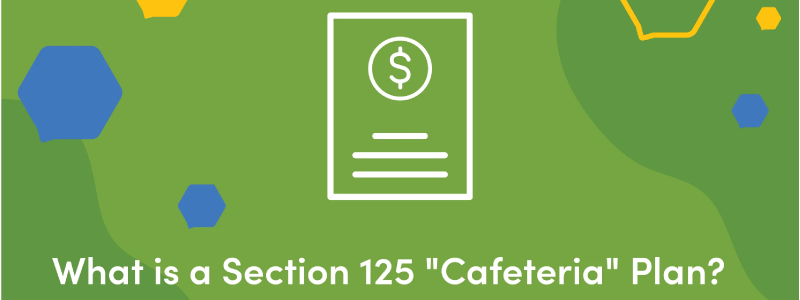What is a Section 125 Cafeteria Plan?
Section 125 of the Internal Revenue Code, also known as a “Cafeteria Plan” allows employees to pay certain expenses on a pre-tax basis, such as insurance premiums and medical or dependent care expenses to reduce their taxable income. The Premium Only Plan (POP) is the foundation of the Section 125 plan as it allows employees to pay group insurance premiums with pre-tax dollars. In turn a POP plan reduces an employee’s State, Federal and FICA (Social Security and Medicare) taxes.
In addition the employer will pay a lower amount of matching FICA taxes. Cafeteria Plans have traditionally been used to allow group health insurance premiums, both employer-paid and employee paid, to be offered on a pre-tax basis.
Types of Cafeteria Plans
Full flex plans – Section 125 Full Flex Plans, employers make contributions for all plan-eligible employees, and employees use those contributions to buy various benefits. Employees can then make pre-tax contributions towards any benefit that the employer contributions do not fully cover.
Premium-only plans (POPs) – Section 125 Premium only plans allow employees to choose between receiving their full salary in cash or using a share of that salary to pay group insurance policy premiums on a pretax basis.
Flexible spending account (FSAs), Section 125 Flexible Spending Account (FSAs) allow employees to make contributions toward health care and dependent care expenses on a pretax basis.
Section 125 Cafeteria Plan Advantages & Disadvantages
Advantages of a section 125 plan:
- Employee tax savings. Funds are placed into an account pre-tax helping employees pay for eligible out-of-pocket medical expenses. For example, an employee who spends $200 a month in pretax dollars for benefits can, in effect, save $60, assuming about 30 percent of the $200 would have gone to federal, state and local incomes taxes and FICA (the taxes deducted for Social Security and Medicare).
- Lowering employer taxes. By lowering an employees taxable income the employer will pay a lower amount of matching FICA taxes.
Disadvantages of a section 125 Plan:
- Use them or lose them. Employees who put funds into a section 125 plan must use them during the plan year or those funds will be returned back to the employer.
- Employees fund expenses upfront. Employees are reimbursed for expenses as part of a health flexible spending account. This means expenses must be paid out of pocket first and are reimbursed after a claim is made.
Pair your HRA with a Section 125 Plan.
If you are already offering an Individual Coverage Health Reimbursement arrangement your employees can enjoy Section 125 tax savings too.
As more employers are leaving the traditional group health insurance market and instead choosing to go the ICHRA model, ensuring that all the tax advantages are utilized is an important and sometimes overlooked component. An employer can do a stand-alone HRA, but an HRA combined with a Section 125 Cafeteria Plan provides maximum tax advantages.
Learn more by downloading our “Combine your ICHRA with your Cafeteria Plan for maximum tax advantages” white paper.
Want to offer additional tax-savings to your employees?
Self administering a section 125 Plan can be difficult and time consuming. Utilizing a plan administrator such as Benafica ensures you stay compliant every step of the way. Your administrator will not only be responsible for Section 125 Plan Document set up, but also on going employee education and administration.
At Benafica, it’s our mission to educate companies and individuals on the healthcare benefits available to them, so they can make the coverage decisions that best meet their needs. If you’re ready to learn more about your business’s health benefits options, feel free to give our team a call today at 651-287-3253 or send us a message, and we’ll be in touch promptly.



